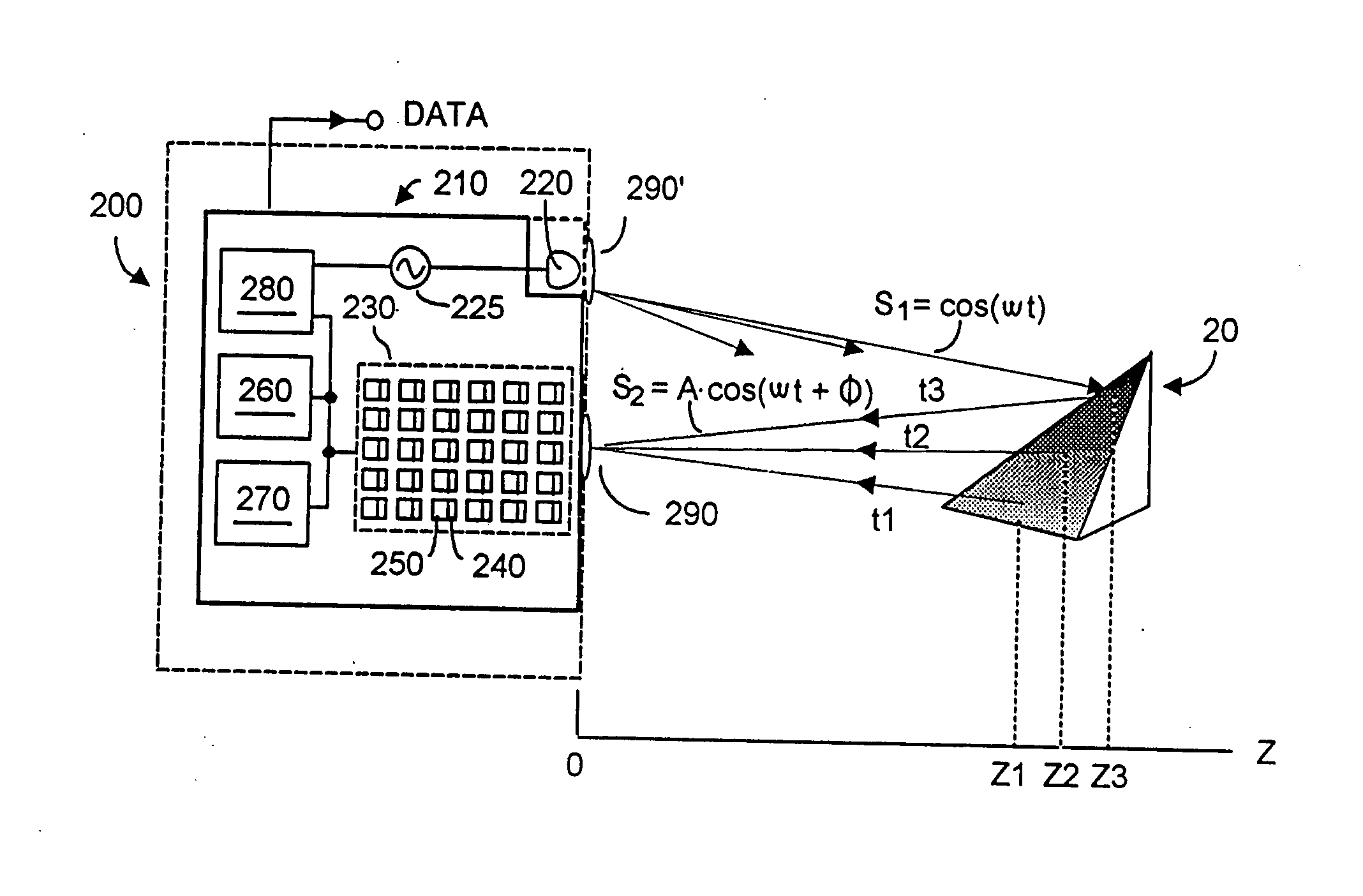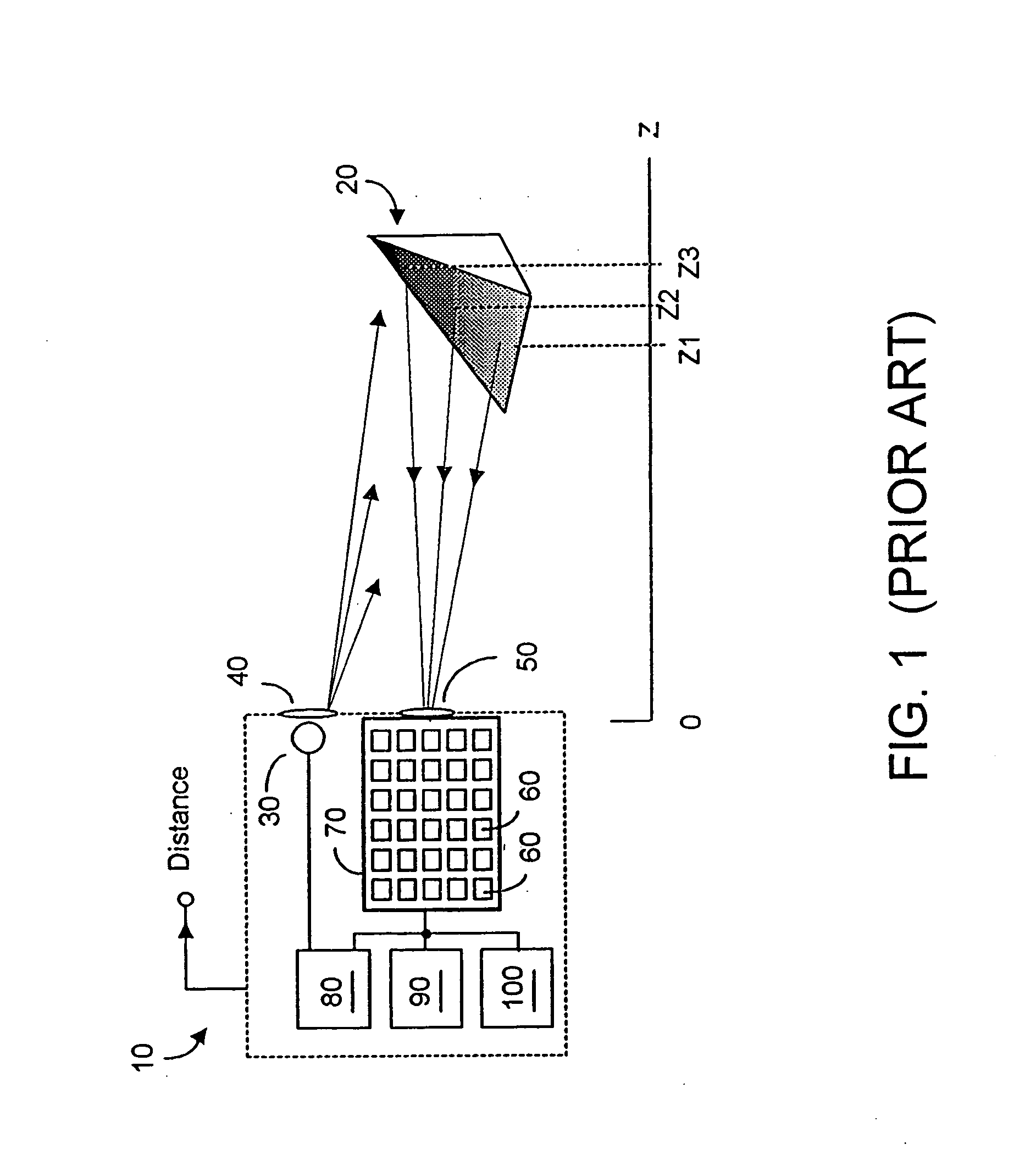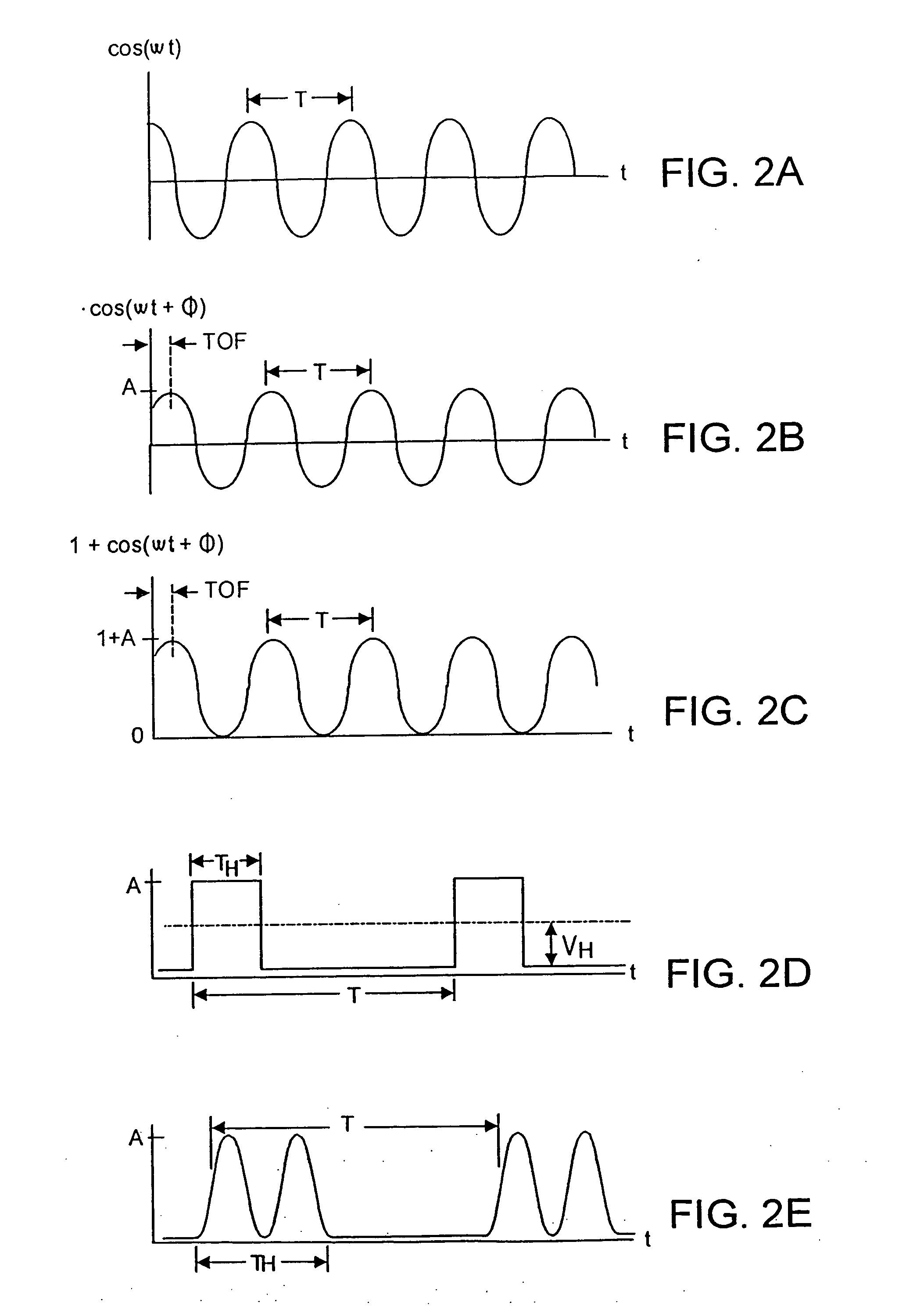Methods and devices for charge management for three-dimensional and color sensing
a three-dimensional and color sensing technology, applied in the field of three-dimensional and color sensing charge management, can solve the problems of difficult to approximate the focal distance to an object or subject, time-consuming process, and inability to work well with luminosity-based systems, so as to achieve effective color resolution of a camera or sensor according, improve detection signal characteristics, and reduce overhead
- Summary
- Abstract
- Description
- Claims
- Application Information
AI Technical Summary
Benefits of technology
Problems solved by technology
Method used
Image
Examples
Embodiment Construction
[0091] Before describing the inventions set forth in the three referenced provisional patent applications, it may be useful to first describe the invention(s) of U.S. Pat. No. 6,580,496, hereafter “the '496 invention” or U.S. Pat. No. 6,515,740. As the '496 and '740 patents had the same specification, reference to the inventions of either will be denoted herein as being to the '496 invention.
[0092] That invention advantageously transmitted and detected optical energy that was periodic with a high frequency component, and relied upon phase shift between transmitted and detected waveforms to discern time-of-flight (TOF) and thus z-distance data. Although pulsed-type periodic waveforms could be used, the '496 invention will be described with respect to the emission and detection of sinusoidal waveforms, as such waveforms are rather easily analyzed mathematically. However it is to be understood that periodic pulsed waveforms with a high frequency component including imperfect sinusoida...
PUM
| Property | Measurement | Unit |
|---|---|---|
| frequency | aaaaa | aaaaa |
| wavelength | aaaaa | aaaaa |
| wavelength | aaaaa | aaaaa |
Abstract
Description
Claims
Application Information
 Login to View More
Login to View More - R&D
- Intellectual Property
- Life Sciences
- Materials
- Tech Scout
- Unparalleled Data Quality
- Higher Quality Content
- 60% Fewer Hallucinations
Browse by: Latest US Patents, China's latest patents, Technical Efficacy Thesaurus, Application Domain, Technology Topic, Popular Technical Reports.
© 2025 PatSnap. All rights reserved.Legal|Privacy policy|Modern Slavery Act Transparency Statement|Sitemap|About US| Contact US: help@patsnap.com



